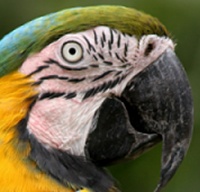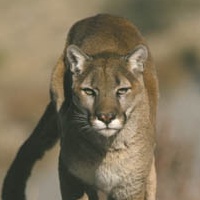
|
ZUNI FETISH MEANINGS :::
by Darlene Meader Riggs, zunispirits.com
The Zuni Fetish Story
The Zuni Fetish Meanings
The Zuni Language
What are Zuni fetishes and what do they mean? Zuni fetishes, known to the Shiwi people as wemawe, are small stone animal carvings that are made by the talented artisans of Zuni Pueblo. Zuni is located in New Mexico in the "Four Corners" region of the US of A.
Zuni fetish carvings are a part of the Zuni religion which is extremely complex.
Perhaps due to their remote location, the Zuni people have been able to retain a great deal of their culture and religion despite being among the most studied Native American people by anthropologists, past and present.
In their culture, Zuni fetish carvings represent the animal spirit thought to reside in the stone. Initially Zuni fetishes were likely found stones that had the rudimentary shape of an animal. Arrowheads were placed on the stones with a prayer that the hunter's arrow would find its mark and in gratitude for the animal giving its life for the sustenance of the hunter and his family.
The Zunis believe in six sacred directions, Above, North, East, South, West and Below. Each of the directions is associated with a color:
| Above |
Multicolored |
| North |
Yellow |
| East |
White |
| South |
Red |
| West |
Blue |
| Below |
Black |
And each of those directions has a Zuni fetish animal associated with it. In a healing and protective directional Zuni fetish set the animals are as follows:
| Above |
Multi-colored |
Eagle |
| North |
Yellow |
Mountain Lion |
| East |
White |
Wolf |
| South |
Red |
Badger |
| West |
Blue |
Bear |
| Below |
Black |
Mole |
A Zuni fetish hunting directional set would only be slightly different with the bobcat replacing the badger as the southern animal and the coyote replacing the bear of the west:
| Above |
Multi-colored |
Eagle |
| North |
Yellow |
Mountain Lion |
| East |
White |
Wolf |
| South |
Red |
Bobcat |
| West |
Blue |
Coyote |
| Below |
Black |
Mole |
Additionally, there is a familial relationship between each of the animals in a Zuni fetish directional set. The Mountain lion is considered the elder brother of the bear who is the elder of the badger, considered elder to the wolf, who is elder to the eagle, who is elder to the mole.
Likewise, you may have a Zuni fetish directional set of only mountain lions (or bears, or wolves, etc.) Each animal must be of the appropriate color as follows:
| Above |
Multi-colored |
such as Picasso, Rainbow Calisilica, etc. |
| North |
Yellow |
such as Dolomite, Yellow Calcite, etc. |
| East |
White |
such as Marble, Alabaster, etc. |
| South |
Red |
such as Pipestone, Red Dolomite, etc. |
| West |
Blue |
such as Turquoise, Lapis, etc. |
| Below |
Black |
such as Jet or Black marble, etc. |
Other tribes use (and make) fetishes but it is the Zunis who are particularly known for their fetishes. A revival, of sorts, occurred in the late 1980's when an article appeared in the WALL STREET JOURNAL. The number of Zuni fetish carvers dramatically increased at that time and the introduction of power hand tools made the detail and realism of contemporary Zuni fetishes possible.
There are a number of books that discuss Zuni fetishes, their meanings and the families who carve them. We heartily recommend any of the books by Kent McManis as valuable references on Zuni fetishes.
 |
BADGER : The badger represents the southern direction in protective and healing fetish set. He is most often associated with the color red and is believed to have knowledge of healing roots and herbs. Characteristics associated with bagders include tenaciousness, passion, control, persistence and earthiness.
Click here to hear "badger" in Shiwi, - the Zuni Language. |
 |
BEAR : The bear represents the western direction in a protective and healing fetish set. He is associated with the color blue and known for his curative powers. Though all bears are healers, white bears are particularly powerful. Characteristics associated with bears include strength, courage, adaptability, healing and spiritual communion.
Click here to hear "bear" in Shiwi, - the Zuni Language. |
 |
BEAVER : Beaver fetishes represent home, family and unity. They are revered for their building skills and associated with water by some north eastern tribes. In Zuni they are carved by a variety of artisans some of whom put little tiny twigs in their mouths.
|
 |
BOBCAT : In a hunting directional set, the bobcat is the elder brother of the wolf and represents the southern direction, replacing the badger of the healing directional set. He is most often associated with the color red. He is carved of many materials but probably most often from Picasso marble. He can be depicted in an extremely realistic style (like the Cheamas render) or a very symbolic style (like Dan Poncho). Characteristically he's thought to be a clever hunter as he doesn't have the size or power of the mountain lion. There are stories about he and coyote playing tricks on each other. The prankster coyote smushed the bobcat's nose and tail in while he was sleeping. And when the bobcat woke up and realized what happened he sought revenge by pulling the nose of the sleeping coyote making it long and pointy and yanked the tail so long that it nearly drags the ground.
Click here to hear "bobcat" in Shiwi, - the Zuni Language. |
 |
COYOTE : The coyote is the representative of the western direction in a hunting set, replacing the bear in a healing directional set. He's most often associated with the color blue. The coyote's characteristics are arrogance and a sense of self-importance. Despite this, he can be a great teacher showing us how our impulsive nature or our self-centeredness fail to serve us well. And he can remind us to recognize those habits which ultimately make our lives more difficult.
Click here to hear "coyote" in Shiwi, - the Zuni Language. |
 |
EAGLE : The guardian of the zenith or sky, the eagle is multi-colored and he is part of both a healing and a hunting directional set. He is the messenger to the gods and associated with power, balance, dignity and grace. Highly revered in Zuni, the eagle's feathers are still used in sacred ceremonies.
Click here to visit our Zuni Eagle Sanctuary pages .
Click here to hear "eagle" in Shiwi, - the Zuni Language. |
 |
FOX : The fox is quick and observant. He approaches life with amusement and cleverness and can make himself invisible when threatened. When in an uncomfortable situation, become fox-like. Blend in, make no quick moves and plan your escape! Fox fetishes will be similar to wolves but with elongated, fluffy tails. Often their facial features will be very delicate with pointed ears and nose.
|
 |
FROG : Frogs are a motif that are found in much of puebloan art. They are most often associated with water, prayers for rain, and fertility. Even tadpoles, in their various progressions to maturity, are carved into fetishes. Frogs are carved from various materials by many different artists. But the carver most associated with frog fetishes has to be Ricky Laahty.
Click here to hear "frog" in Shiwi, - the Zuni Language. |
 |
HAWKS : Known for their hunting skills and in keeping rodents away from crops, hawks are carved in a similar fashion to eagles. While eagles are the messengers to the gods, falcons and hawks are the messengers to people or between animals.
Click here to hear "hawk" in Shiwi, - the Zuni Language. |
 |
HORSE : Horses are not a traditional animal of the Zuni but they carve them (and probably have for generations) for other tribes and for herd protection. Characteristics associated with horses are power and achieving one's potential.
Click here to hear "horse" in Shiwi, - the Zuni Language. |
 |
MACAW : The macaw was, and is, an important bird in puebloan cultures. Their carcasses have been found at Chaco providing evidence of trade with cultures that lived much further south. Even today macaw feathers are highly prized and used ceremonially and in dance costumes. The macaw plays a part, as does the raven, in the Zuni story of migration.
|
 |
MOLE : Moles are the unassuming guardians of the "nadir" or underworld. They are also appreciated for keeping the gardens free of pests. Associated with the color black, they are often carved of jet or black marble. Many artists will inlay eyes while other will leave the mole "blind". Moles remind us to watch for the subtle things in life. Change is still change even when made in small increments!
Click here to read more about moles vs. shrews.
Click here to hear "mole" in Shiwi, - the Zuni Language. |
 |
MOUNTAIN LION : Thought to be the most powerful hunter, the mountain lion is the guardian of the northern direction. He is associated with the color yellow and appears in both hunting and healing directional sets. Today, mountain lion fetishes are carved with great realism and detail and also in the more ancient, primitive style. Before the introduction of power tools, most mountain lions were represented with their tails up and over the back. Now carvers are able to carve long, flowing tails that extend behind the back or even curl in delicate swirls. The mountain lion can remind us to perservere, clarify our goals and move forward to achieving our dreams.
Click here to hear "mountain lion" in Shiwi, - the Zuni Language. |
 |
RABBIT : The rabbit is not a traditional Zuni animal but was likely carved to satisfy requests from other tribes and, in more recent times, demands from collectors. They are often carved by Jayne Quam with soft curves, minimal detail and fluid lines. Travis Lasiloo also carves them with great detail and often humorous postures. Rabbits are usually the dinner of predators so they are often associated with facing fears and the avoidance of making them our reality. Due to their reputation for abundant reproduction they are also associated with birthing and fertility.
Click here to hear "rabbit" in Shiwi, - the Zuni Language. |
 |
RAM : The Zuni's use a coyote fetish when hunting for bighorn or mountain sheep but it is in Hopi-land that mountain sheep have the most importance. Some rams will look like goats and without knowing the artists' intention, it may be difficult to discern a ram or mountain sheep from a pronghorn, deer or domestic goat.
Click here to hear "mountain sheep" in Shiwi, - the Zuni Language. |
 |
RAVEN : The raven is not a traditional fetish but he is carved often, and beautifully, by a number of artists. Some artisans will put a stone in the raven's mouth. He is generally carved of jet or black marble though he can appear in virtually any stone of the artist's choosing. While considered somewhat of a prankster, he doesn't have the negative characteristics associated with the coyote. The raven can help us work through failure and short-comings by reminding us that anything we have the courage to face, we have the power to transform.
Click here to hear "bird" in Shiwi, - the Zuni Language. |
 |
TURTLE : The turtle is a symbol of the earth in most Native American cultures. He is also associated with self-reliance, non-violent defense and being a skillful navigator through life's obstacles. Though he is not a traditional puebloan fetish, he is carved frequently today by many different artisans. Some will carve them in a realistic style and others will employ inlay and sgraffito to decorate the turtle's shell.
Click here to hear "turtle" in Shiwi, - the Zuni Language. |
 |
WOLF : In Zuni the wolf is considered the younger brother of the bobcat in a hunting directional set. He is most often associated with the color white and may be carved from selenite or white marble, alabaster or serpentine that is pale in color. Today's artisans will carve him in great detail with etched fur and a stalking pose. Characteristically he's thought to be loyal with strong family ties.
Click here to hear "wolf" in Shiwi, - the Zuni Language. |
This is the briefest explanation of Zuni fetishes. We sincerely hope you will continue your research as there are a number of excellent books about Zuni fetishes, the artists who make them and their symbolic significance to the Shiwi people. It's a fascinating subject to those of us who love wildlife, geology and Native American spirituality and wisdom. Have fun!
| |



















